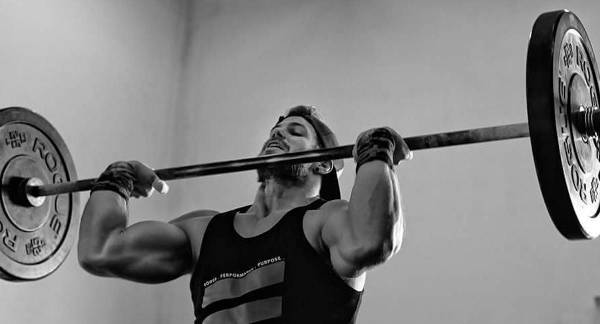(Source: Bev Childress)
It is not unusual to find the strength training community divided when it comes to what style of training is best or how and when to employ the many training techniques and variables available. One of the most classic battles is methodology is the one between the proponents of High Intensity Training (HIT) and those coaches and athletes who seem to prefer Olympic-Style Weightlifting (OSW). I personally have never really understood the almost religious fanaticism with which some may argue for or against their preferred approach to getting stronger.
For years I have been a fan of brief, intense, and infrequent training. Having tried just about every one of the recognized (as well as the obscure) training programs that have come along in the last twenty years, I can honestly say this preference is still true today. My goal has always been to find the precise amount of volume, frequency, and intensity that will allow me to reach my goals with maximum efficiency and minimum downtime. With years of trial and error, creative experimentation, and hard work under my belt I have discovered a few combinations that seem to produce consistent results.
Now counter to the notion of this brief, intense, infrequent style of training, often referred to as HIT, I am also a fan of Olympic-style weightlifting. For many this might seem odd. For some it may seem the two styles are not compatible with one another. I assure you it is not odd and they are very compatible.
Olympic-style weightlifting is very technical. The movements are often difficult to master and some of the positions may cause a great deal of discomfort in the early stages of learning. I guess that is one of the reasons I enjoy Olympic-style weightlifting, the focus, and attention to detail required to attain a sense of mastery is a lifetime journey. Almost anyone can learn to work hard on a basic movement such as a lat pull-down or a seated row, but to truly master the snatch or clean-and-jerk requires far more patience and dedication.
Now don’t get me wrong, I am all about hard work on the basics when it comes to efficient strength training. I am not one of those coaches who feels Olympic-style weightlifting is required for athletic success (unless of course, you are an Olympic weightlifter). But I do enjoy it and that is why I often include some Olympic-style weightlifting movements in my personal training plan.
Which brings us back to the dilemma at hand, how to combine HIT with OSW.
One way to combine the more classic HIT style of training with OSW is as follows:
- Start with a basic O-lifting routine (see below). Practice this routine in a strict order of exercises, as well as a certain and consistent amount of sets, reps and rest periods.
- For your HIT training days create short routines which are made up of basic pushing, pulling, and squatting movements along with some assistance exercises. Perform these in a classic High Tension/Low Force manner with an emphasis on slow, controlled movement.
- Workout roughly every other day alternating one of these basic HIT routines with the OSW routine.
In this way you will perform both the OSW and HIT routines three times every two weeks. Use the O-lifting days as technique polishing opportunity and active recovery days. Still train hard and heavy, however, do not train to failure and strive to always leave a few reps in the tank. On the HIT days perform single sets to failure of a handful of movements and strive to take each set to the limit. This can be an excellent way to combine these two styles of lifting, reaping the maximum benefit each has to offer while maintaining a balance between stimulus and recovery.
If you have always been a practitioner of either one or the other of these two styles of lifting perhaps now is the time to try something new. If you have never tried OSW then I recommend you find a qualified coach for your initial instruction as this style of lifting is quite technical. With HIT, if you have rarely if ever trained to momentary muscular failure then ease into it as the muscular soreness sometimes associated with this style of training can be quite intense.
Give this HIT/OSW combination a try and I think you may find it to be a fun and effective way to reap the rewards each of these styles of training has to offer.

(Source: Bev Childress)
Example HIT/OSW Hybrid
For the O-lifts I tend to stick with each routine for 12 workouts. Following the above described pattern that has me changing things up about every eight weeks or so. On the HIT days I get a little more creative, varying the order of the exercises, reps, and rest intervals, as well as employing advanced overload techniques when my energy and recovery allow.
Keep in mind the following routines are just a few examples of thousands you could employ.
Sample Olympic Weightlifting Workout
(Courtesy of Jim Schmitz)
Sample H.I.T. Workouts
Workout 1 – (A.J. Classic)
Workout 2
Workout 3






